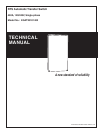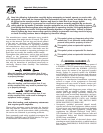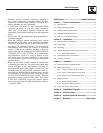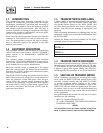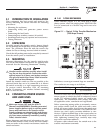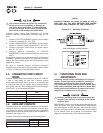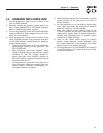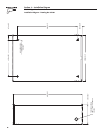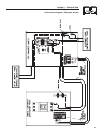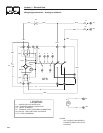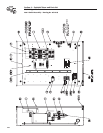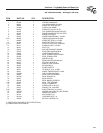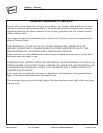
7
3.4 GENERATOR TESTS UNDER LOAD
1. Set the generator's main circuit breaker to its
OFF or OPEN position.
2. Manually actuate the transfer switch main con-
tacts to their EMERGENCY (STANDBY) position.
Refer to “Manual Operation” section.
3. To start the generator, set the AUTO/OFF/MANUAL
switch to MANUAL. When engine starts, let it sta-
bilize for a few minutes.
4. Turn the generator's main circuit breaker to the
ON or CLOSED position. The generator now pow-
ers all LOAD circuits. Check generator operation
under load as follows:
• Turn ON electrical loads to the full rated watt-
age/amperage capacity of the generator. DO
NOT OVERLOAD.
• With maximum rated load applied, check
voltage and frequency across transfer switch
terminals E1 and E2. Voltage should be
greater than 200 volts (208VAC system) or
230 volts (240VAC system); frequency should
be greater than 59 Hz.
• Let the generator run under rated load for at
least 30 minutes. With unit running, listen for
unusual noises, vibration, overheating, etc.,
that might indicate a problem.
5. When checkout under load is complete, set main
circuit breaker of the generator to the OFF or
OPEN position.
6. Let the generator run at no-load for several min-
utes. Then, shut down by setting the AUTO/OFF/
MANUAL switch to its OFF position.
7. Move the switch's main contacts back to the
UTILITY position. For example, load connected to
utility power supply. Refer to “Manual Operation”.
Handle and operating lever of transfer switch
should be in down position.
8. Turn on the utility power supply to transfer
switch, using whatever means provided (such
as a utility main line circuit breaker). The utility
power source now powers the loads.
9. Set the generator's AUTO/OFF/MANUAL switch to
its AUTO position. The system is now set for fully
automatic operation.
Section 3 — Operation
RTS “W” Type Transfer Switch



